The 2018 elections were a game changer for public education in a number of states. On the heels of the historic #RedforEd educator walkouts last spring, voters seized the opportunity of the midterm elections and replaced a hearty handful of governors who pushed destructive policies with public education supporters.
Those education governors are already making a difference by proposing budgets that call for meaningful investment in public schools and educator salaries, among other things. Take a look at how they are changing the conversation about public education in their states:
Gov. Tim Walz

Former public school geography teacher Tim Walz has a long history of supporting public education over his six terms serving in the U.S. House of Representatives. Now, as governor, Walz is making Minnesota’s public schools a top priority. His first budget calls for a nearly $750 million increase in education spending over two years. That includes adding $523 million to the per-pupil formula and $77 million for special education needs. Walz’s budget also includes funding to continue a critical pre-K program that is set to expire, $26 million for support staff and building updates, and $8 million for full-service community schools. Minnesota’s public universities would see an additional $158 million, including $62 million in grants for students, under Walz’s plan.
Gov. Tom Wolf

Educators enthusiastically supported Gov. Wolf’s re-election bid because of his enduring commitment to public education. In his first term, Wolf followed through on promises to boost education funding, rein in high-stakes standardized testing, and invest in career and technical education. He handily defeated state senate leader Scott Wagner, a voucher supporter who said that teachers are overpaid. Now, Wolf’s latest budget calls for more than $1 billion in new education funding. Educators cheered the $50 million increase for special ed as well as Wolf’s call to increase the minimum starting teacher salary to $45,000 per year. Wolf’s budget invests in his vision that 60 percent of all Pennsylvania residents to attain higher education by 2025 with an infusion of $7 million in the state’s public universities.
Gov. Janet Mills
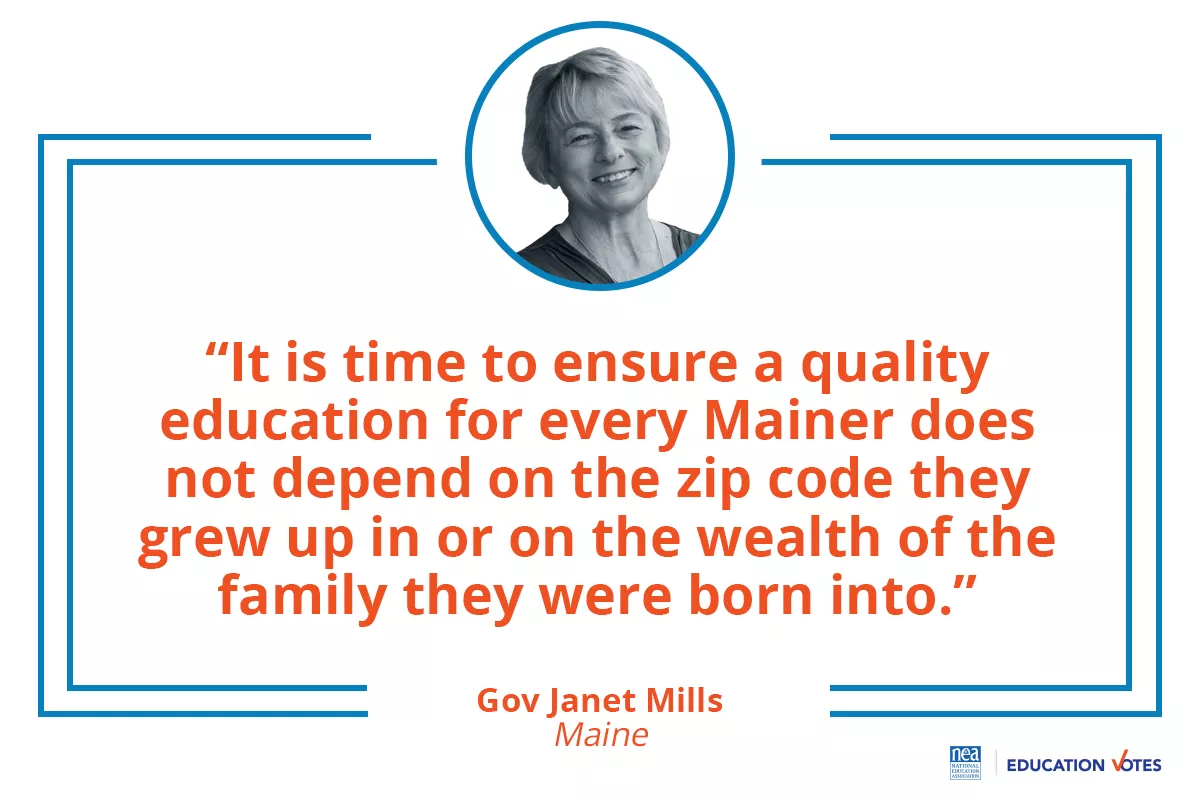
The daughter of a Maine public school teacher, Gov. Janet Mills ran on a public-education friendly platform. Her first budget shows she intends to follow through. Mills is calling for a $126 million investment in public schools over two years that would increase the state’s share of public education funding to nearly 51 percent. Her budget expands pre-K programs and ensures that no teacher in Maine would make less than $40,000 a year. Mills’ approach is a U-turn from that of her predecessor, Paul LePage, who cut funding for public schools by $12.5 million in his first year alone and said, “If you want a good education in Maine, go to a private school. If you can’t afford it, tough luck.”
Gov. Tony Evers

In his first budget, Gov. Tony Evers is attempting to shore up some of the damage done to public education under Gov. Scott Walker, who was defeated in large part because of his attacks on public schools and public employees. The Evers budget puts $1.4 billion back into Wisconsin’s K-12 public schools over two years, which represents a 10 percent increase. The plan includes a historic $600 million increase to special education and $64 million for student mental health and safety. In his budget address, Evers also called for raising teacher salaries, which currently lag below the national average. An additional $150 million would go to the University of Wisconsin System, which suffered severe budget cuts and attacks under Walker.
Gov. Gretchen Whitmer
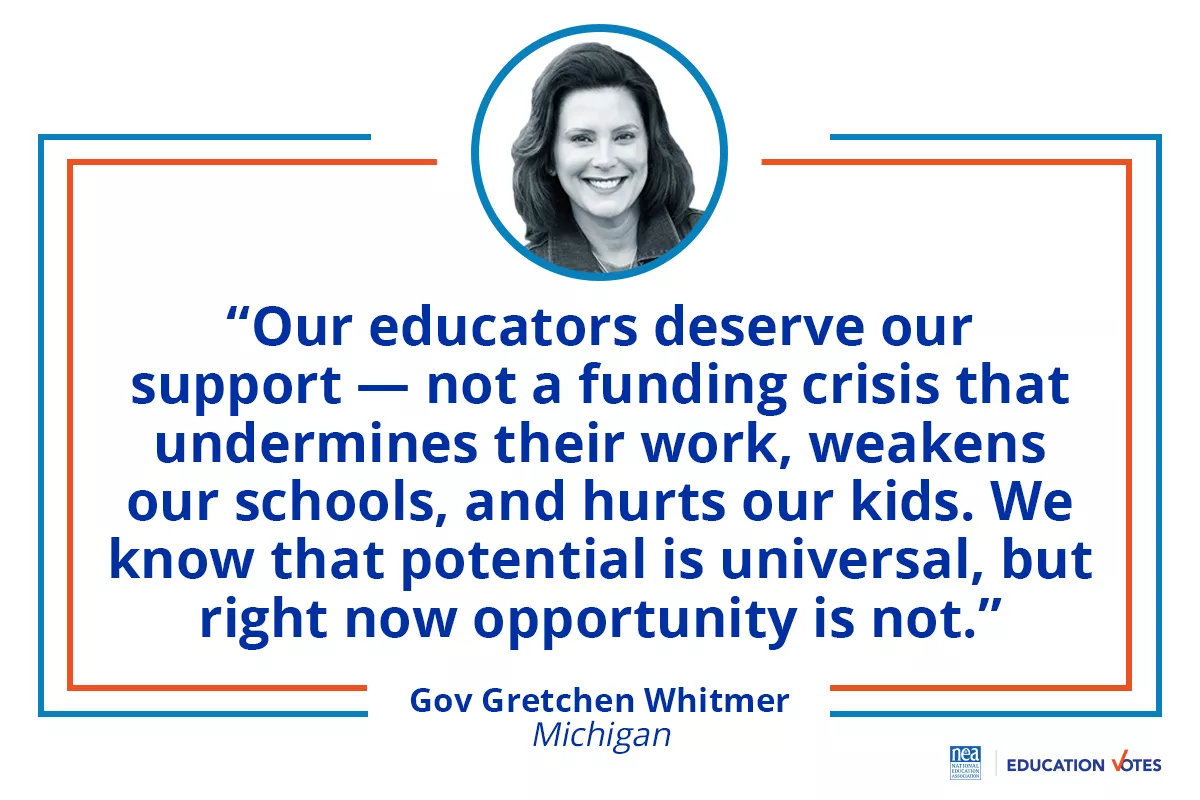
Michigan Gov. Gretchen Whitmer is determined to restore education funding cut by the previous administration, and undo the damage of Betsy DeVos’ crusade to privatize public ed in Michigan. Gov. Whitmer proposes a historic $507 million investment in K-12 schools. In addition to a base increase in per pupil spending, that figure includes significant bumps for special education, at-risk student programs, and career and technical education. As part of her Drinking Water Protection Initiative, Whitmer designates $60 million to replace old drinking fountains in schools—which can contain lead parts—with safe, modern hydration stations.
Gov. Brad Little
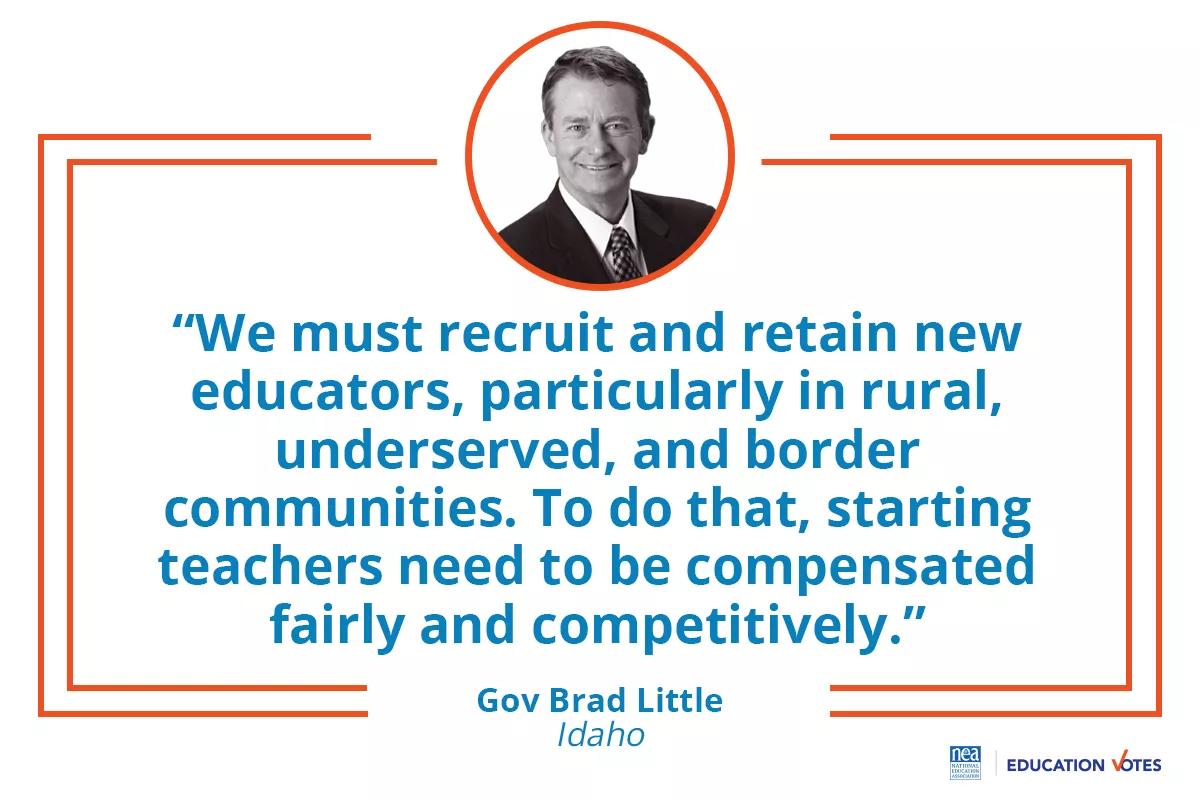
In his state-of-the-state and budget address, Gov. Brad Little pledged to keep Idaho moving forward in education. The state increased the education budget by 32 percent and, in the past year, Idaho teachers received one of the nation’s largest year-to-year pay increases. Little’s budget would raise starting teacher salaries to $40,000 a year, double literacy program funding to $26 million, and put more resources into a program that makes higher education accessible to more students.
Gov. Laura Kelly
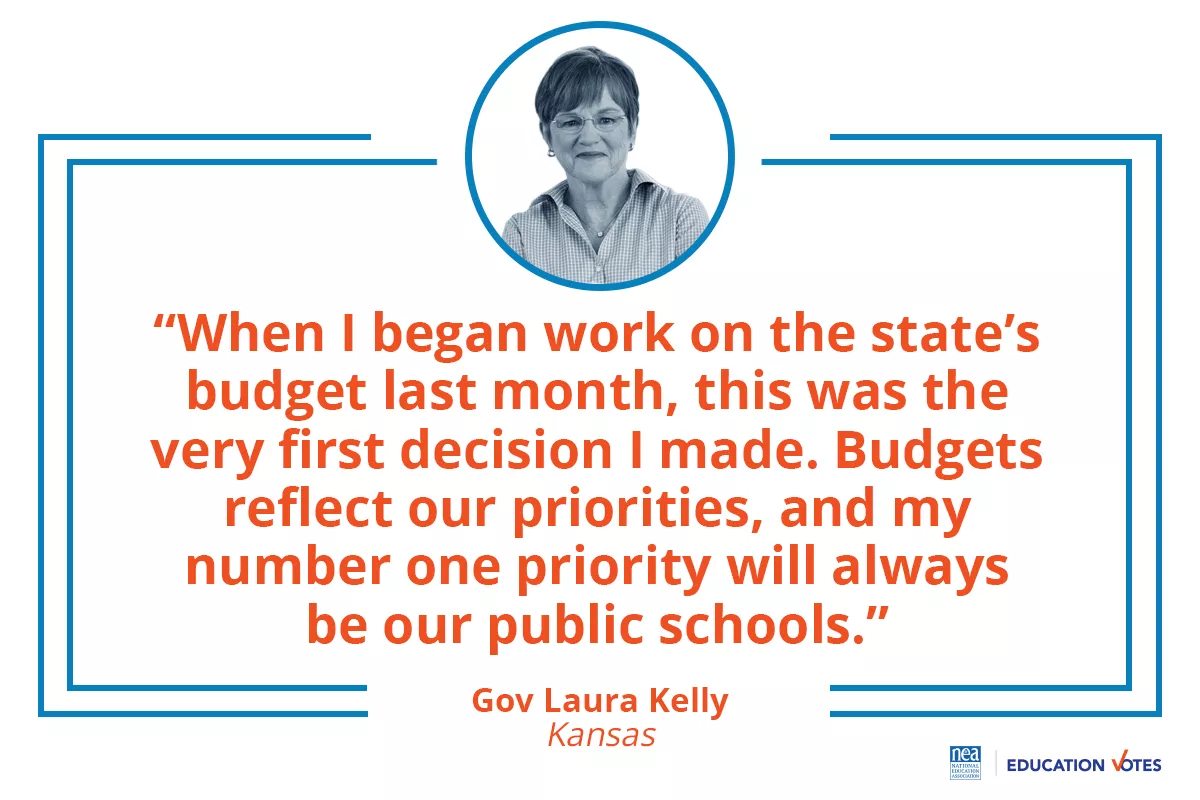
Gov. Laura Kelly has delivered what so many Kansans have long awaited: A budget that restores critical funding for the state’s public schools following decades of deep cuts under previous leaders. Kelly’s proposal restores $92 million to school funding, in accordance with the recommendation of the Kansas State Board of Education. Her proposal raises BASE aid under the school funding formula and makes solid investments in early childhood education with a pre-K pilot program.
Gov. Michelle Lujan Grisham
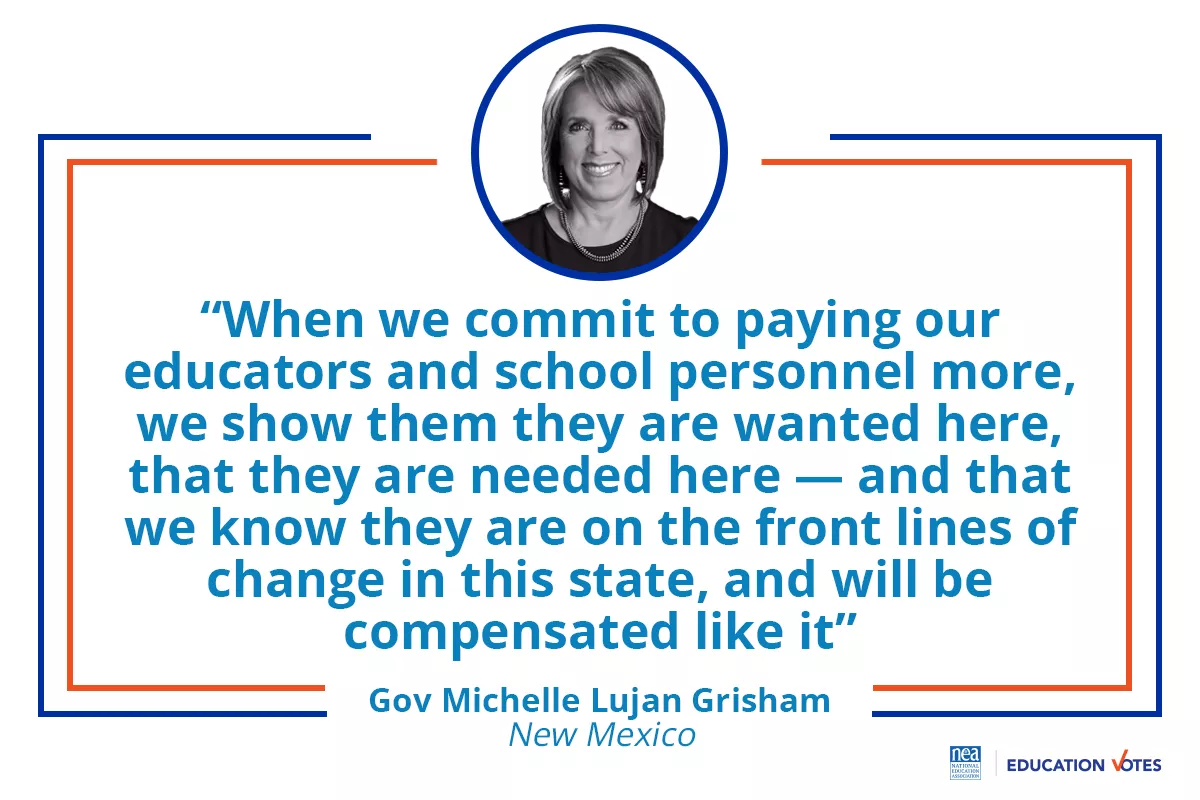
New Mexico Gov. Michelle Lujan Grisham called her budget proposal “a moonshot for public education,” and it starts with an investment of half a billion new dollars for schools. She proposes raising educator salaries by 6 percent across the board and raising minimum salaries by at least 10 percent. Lujan Grisham’s longer-range goals include moving toward universal pre-K, bolstering bilingual and multicultural education, and replacing an oppressive standardized testing regime with a fair and balanced assessment system that prioritizes growth.
